This fortnight, we have an entry written for us by guest blogger Katy, one of the Textile Conservators who has been working on objects to be displayed in the new galleries.
The new Europe galleries will showcase some brilliant and beautiful examples of large textile hangings, including tapestry, needlepoint and wool appliqué. Early on in the selection process a conservator checks over each textile, assessing its condition, suitability for display, and estimating the number of hours of conservation work required.

Several of the chosen hangings needed cleaning to remove the accumulation of dirt and dust that is typical of large textiles which have long histories of open display in private houses and later, in museums and galleries.
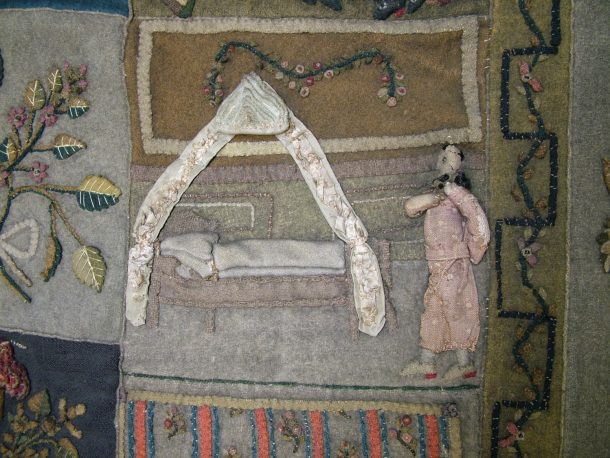
The textile conservation studios at the museum are well equipped for cleaning a wide range of textile objects, but the scale of these large hangings complicates the task. While tapestries have in the past been cleaned at the museum, the facilities at De Wit in Belgium are better designed to overcome the two main problems – the size of the textile, and the potential for colour run.
Of the objects going into the Europe Galleries, four tapestries, one needlepoint hanging and one wool appliqué cover were selected to be sent to De Wit for cleaning.
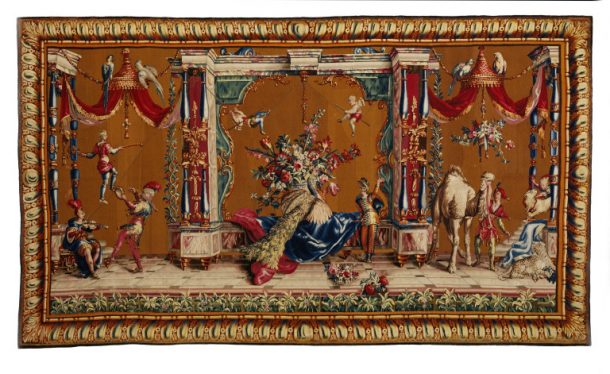
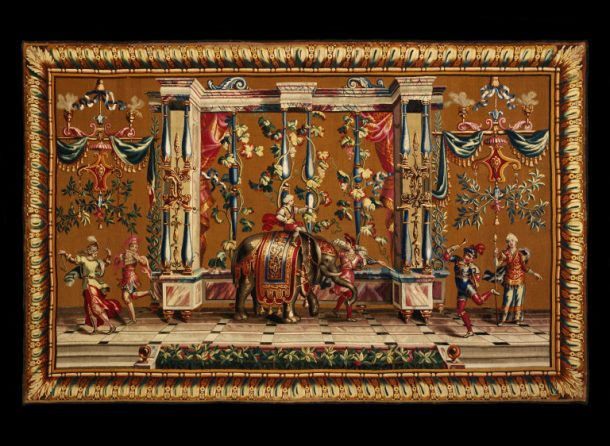
The additional two tapestries which make up the Beauvais set were also sent for cleaning (T.55&56-1955).
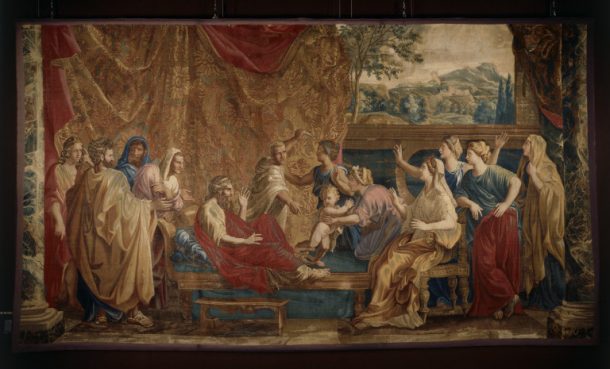
(V&A T.150-1965) Photograph taken before cleaning © Victoria and Albert Museum, London
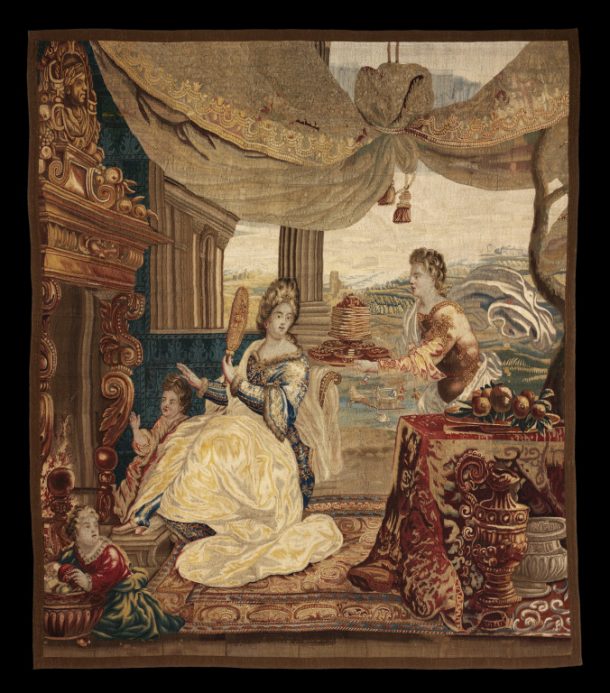
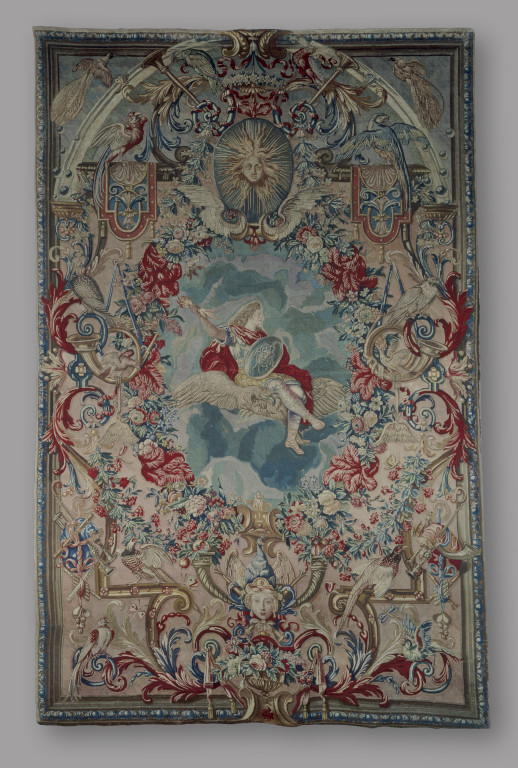

The Royal Manufacturer De Wit is located in the stunning 15th century Refuge of Tongerlo Abbey, Mechelen, Belgium, and specialises in the cleaning, conservation and restoration of tapestries and other textiles.

An aerosol suction table is used to draw moisture with a detergent additive, through the textile. The suction bed is large enough to take a tapestry measuring several metres in each direction, and the process ensures that any colour loss from fugitive dye is rinsed straight through the textile without spreading.
In October 2012, a senior textile conservator traveled to De Wit in Mechelen, with an assistant textile conservator in tow, to oversee the cleaning process of a number of tapestries and textile hangings for the Europe galleries.

The cleaning system is automated, with the textile held in place by suction, and the washing solution delivered as a spray. It is also computer controlled, with the pH and conductivity of the water constantly monitored, and additives such as detergents introduced to the cleaning solution when needed. The waste water is collected, showing just how dirty the textile is at the beginning of the process, and how clean it is by the end.

The Bohemian quilt presented a special challenge. It was heavily soiled, and had varying thicknesses throughout – the nature of appliqué being layers upon layers of fabric. There was also the risk of colours running, and of shrinkage, as it is made almost entirely of felt. The quilt was laid on a thin sheet of foam, which acts as a barrier from the vacuum beneath. It was cleaned by hand, with hoses soft brushes, two very patient De Wit employees carrying out the delicate work.
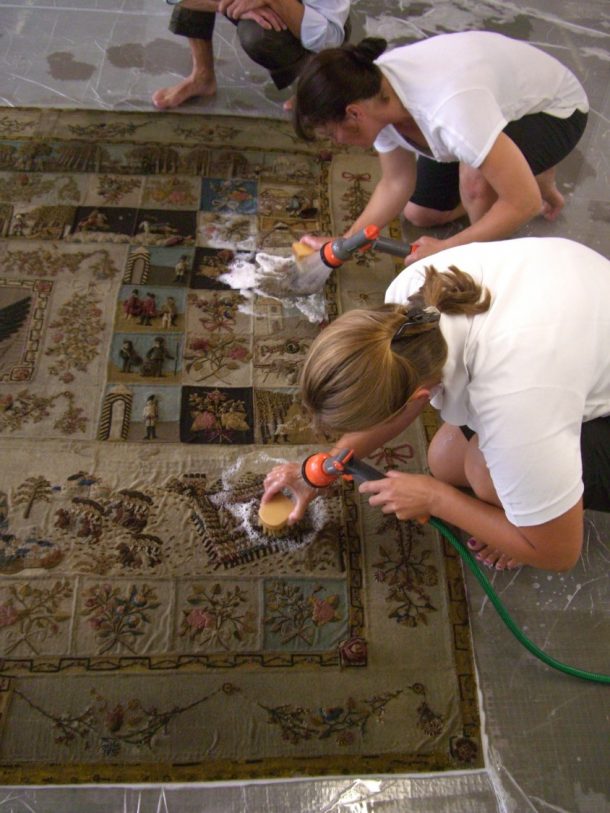
All of the hangings – tapestries, quilt and needlepoint – were transformed. With the dirt removed, the colours could shine through, and the overall appearance is greatly improved. The hangings were carefully packed, and brought back to the museum, for the next stage of their conservation treatment to begin.

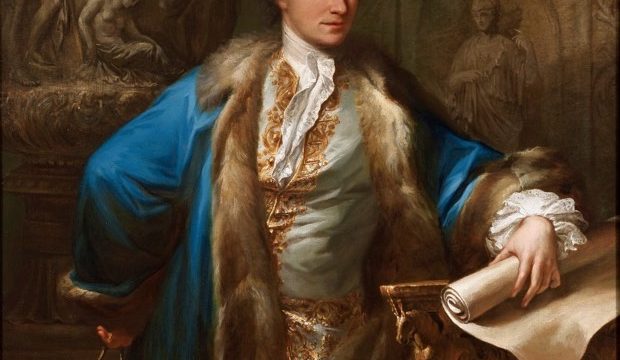
Carpet needs the proper cleaning, now there are many expert companies who perform very well.
People use the service of professional cleaners to clean their carpet deeply.
Nice post, thanks to sharing with us. Shop beautiful wall tapestry from handicrunch at low price in various varieties.